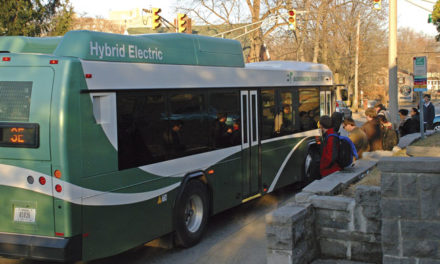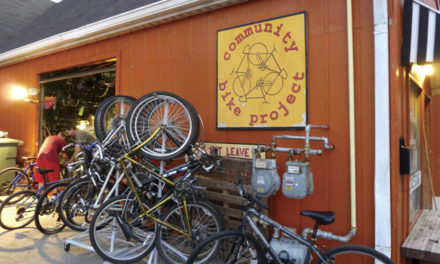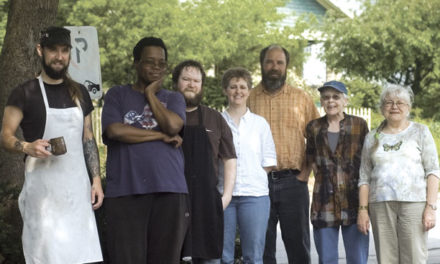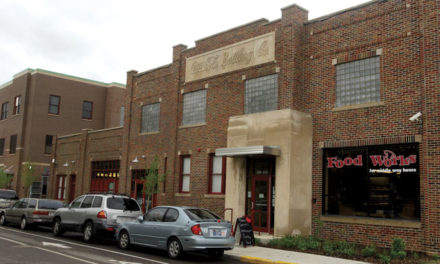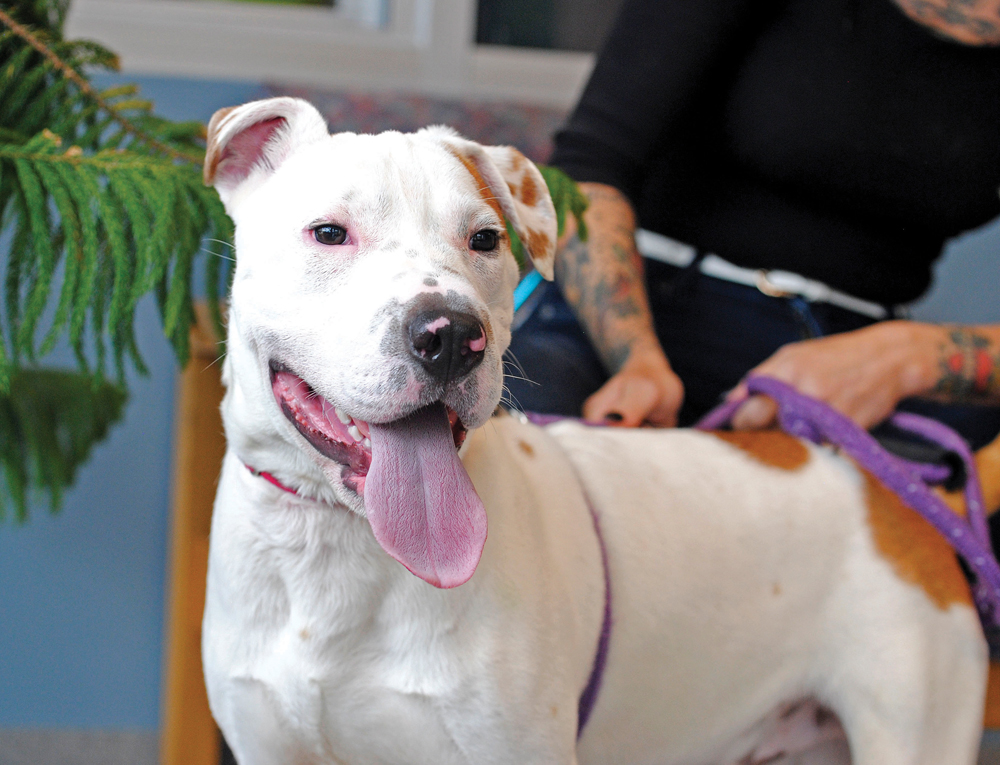
Spike, the ribbon-cutting assistant at the animal shelter re-opening, recently found his forever home. Photo by Nicole McPheeters
BY JULIE GRAY
When the Bloomington Animal Shelter hosted an official ribbon-cutting ceremony to celebrate its newly renovated and extended building in June, a 6-month-old shelter dog named Spike cut—or rather tore—the ribbon, with an assist from shelter Director Virgil Sauder and Bloomington Mayor John Hamilton.
While adorable Spike was an attention grabber, the improvements to the shelter are less conspicuous. “Unfortunately,” Sauder says, “most of our visitors don’t see our changes because a lot of them are behind the scenes.”
Work on the $2.1 million project took a year to complete. But the changes will save lives among the approximately 4,000 animals who pass through the shelter every year. As recently as two decades ago, both in Bloomington and nationally, a high percentage of shelter cats and dogs were euthanized. So far this year, the Bloomington shelter’s euthanasia rate is at a record low of 4 percent, and the losses are due almost entirely to serious health or behavioral issues.
The changes to the shelter Sauder most appreciates might seem mundane: an industrial dishwasher and a clothes washer and dryer. “We used to have staff and volunteers constantly doing dishes and laundry,” he says. “Now we have freed up a lot of time to deal with the animals themselves.”
Other low-profile improvements are the new ventilation system, which carries fresh air from the healthiest animals first to the sickest animals last, reducing the risk of airborne disease transmission. The cat kennels on the stray side of the shelter are larger, and each is individually ventilated. And the shelter has greatly expanded its areas for treating and caring for sick animals.
Sauder is already seeing improvements. “We saw a drastic reduction in upper respiratory infections, as well as really quick recoveries,” he says.
But the real reasons Sauder and the shelter staff welcome the improvements are intangible. “All of us got into this field because we want to promote the bond between animals and humans as a real and valuable thing,” he says. “That’s what keeps us going day to day.”


